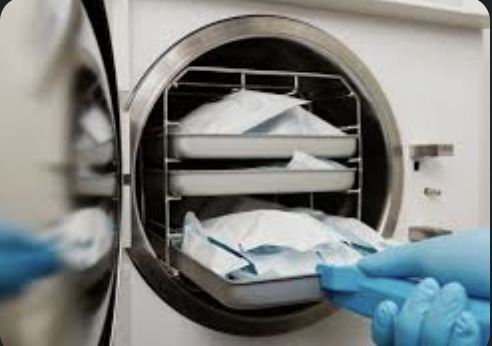Often used in the healthcare or industrial sectors, autoclaves are also known as steam sterilizers. An autoclave is a device that uses pressured steam to kill dangerous bacteria, viruses, fungi, and spores on objects that are placed inside a pressure vessel. The items are heated for a specific period at the proper sterilization temperature. The moisture in the steam effectively transfers heat to the objects, breaking down the spore and bacterial protein structure.
Autoclaves are used to sterilize a wide variety of materials. These include glassware, lab ware, surgical equipment and medical wastes.
The autoclave uses a combination of temperature, pressure and time to kill microorganisms and other organisms that may be present in materials. In addition, validation of the autoclave using biological indicators should be performed periodically. In healthcare settings, autoclaves are frequently used to sterilize medical equipment. The chamber—a pressure vessel that houses the items to be sterilized—is filled with the things.
Pressure
The pressure inside a lab autoclave machine is essential in sterilization. It affects the time it takes to reach a set temperature and whether it is safe to remove items from the chamber.
The steam that enters through a drain pipe replaces the air in the sealed chamber to begin the sterilization cycle. Once the air is completely removed, the exhaust valve closes and the chamber’s temperature and pressure increase to a desired level.
The cycle enters the exposure (Sterilization) phase, and lab equipment is held at a preset sterilization temperature for a set time. After the process, the exhaust valve is closed, and the chamber is depressurized, allowing the equipment to cool and dry.
Temperature
The temperature of an autoclave machine is critical to the sterilization process. It determines whether an item will kill bacteria, viruses, fungi and spores.
Steam under pressure is used to heat items in a chamber to the proper sterilization temperature for a prescribed amount of time. The steam’s moisture effectively transfers heat to the object, breaking down the protein structure of dangerous microorganisms.
Sterilization cycles vary depending on the load being processed. Large loads, dense materials and liquids require longer cycles to reach effective temperatures.
Time
The kind of load that needs to be sterilized and the processing temperature affect how long it takes to sterilize an autoclave machine. For example, regulated medical waste must be at 121deg C for at least 30 minutes to kill any microorganisms present.
Steam must be able to reach all surfaces of the load for proper sterilization efficacy. This is why state-of-the-art autoclaves are equipped with a fractionated pre-vacuum, allowing reliable air removal before steam injections occur.
Materials
Autoclaves can decontaminate various materials, including cultures, pipettes and glassware. It is essential to select the appropriate cycle for each material.
The type of material, container size and volume, and the way it is packed in the autoclave all impact the sterilization process. It also depends on the thermal conductivity of the material and its ability to transfer heat.
For example, metal containers enhance heat transfer and steam penetration, while plastics retard them. In addition, certain materials or larger volumes of liquids require longer to reach effective temperatures.
Safety
The safety of the people using an autoclave machine is critical. This requires a proper system of work and training for operators and supervisors.
Operators must also follow the manufacturer’s operating and safety guidelines in the owner’s manual. These include wearing personal protective equipment (PPE) such as a lab coat, heat-resistant gloves and a face shield.
Before loading items into the autoclave, ensure that they are dry and sanitized to prevent cross-contamination. The autoclave door should be firmly closed and latched.

